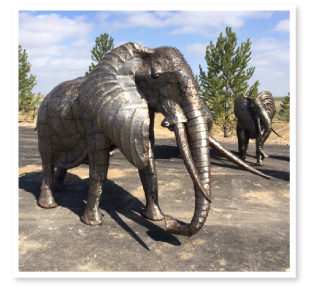Boulder’s ‘Bugtown’ Brothels
11 Sep 2015
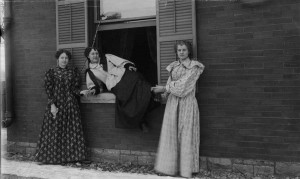 As thrice-elected mayor Montford S. Whiteley pointed out to indignant citizens in 1897, clearing out Bugtown’s brothels would only mean they’d relocate elsewhere in Boulder. Whenever the newspaper reports got too colorful there would be a flurry of police raids, court appearances and fines, yet the “parlor houses” stayed open.
For example, under the succinct Page 1 heading “Paid Their License,” the Boulder Daily Camera reported on July 18, 1891: “Madame Kingsley and her three young ladies accompanied Shep and Metcalf [local constables] up to Judge Adams’ office last evening, pled guilty to keeping a house of ill-repute and were assessed $50 and costs for the madam and $10 and costs for each of the girls. They gave security for the fines and were released.”
As thrice-elected mayor Montford S. Whiteley pointed out to indignant citizens in 1897, clearing out Bugtown’s brothels would only mean they’d relocate elsewhere in Boulder. Whenever the newspaper reports got too colorful there would be a flurry of police raids, court appearances and fines, yet the “parlor houses” stayed open.
For example, under the succinct Page 1 heading “Paid Their License,” the Boulder Daily Camera reported on July 18, 1891: “Madame Kingsley and her three young ladies accompanied Shep and Metcalf [local constables] up to Judge Adams’ office last evening, pled guilty to keeping a house of ill-repute and were assessed $50 and costs for the madam and $10 and costs for each of the girls. They gave security for the fines and were released.”
Ladies of the Night
After researching archived newspapers, retired physicist and local history writer Sanford Charles Gladden (1902-1992) published a booklet titled “Ladies of the Night” in 1979 as part of his “Early Boulder Series.” It listed approximate addresses with estimated start dates for the known brothels, with some madams’ names. A few are listed below: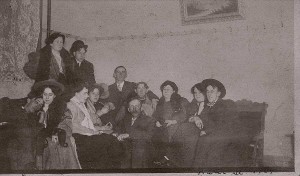
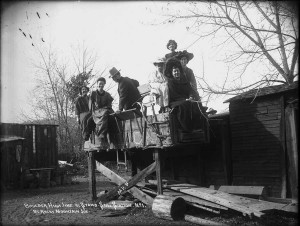
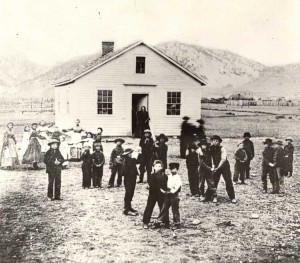 1886 – Northwest corner of 11th and Walnut streets. It was a sore point with Boulder citizens that this enterprise was housed in Colorado’s first school building. Built in 1860 at 1440 Walnut St., the Pioneer School was sold to prominent citizen Anthony Arnett and moved in 1872 to make way for a bigger school. (Arnett was one of the three donors of the land for the University of Colorado.) He turned the old schoolhouse into a rental duplex before it became a brothel and burned down four years later.
1886 – Northwest corner of 11th and Walnut streets. It was a sore point with Boulder citizens that this enterprise was housed in Colorado’s first school building. Built in 1860 at 1440 Walnut St., the Pioneer School was sold to prominent citizen Anthony Arnett and moved in 1872 to make way for a bigger school. (Arnett was one of the three donors of the land for the University of Colorado.) He turned the old schoolhouse into a rental duplex before it became a brothel and burned down four years later.
‘The Life of a Scarlet Woman Weighs Nothing’
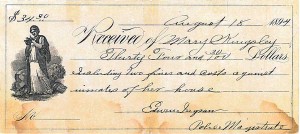 It wasn’t all hijinks and gaiety for the women of these “temples of Venus.” As the Boulder County Herald reported on May 16, 1888: “Mamie Price died Wednesday from cocaine poison, being a victim of that accursed habit as well as morphine. She will be buried today from Trieze undertaking rooms at the expense of Miss Kingsley, at whose house she died.”
On Aug. 20, 1894, enraged wife Maud Hawkes, accompanied by her mother, tracked down and shot to death teenage prostitute Trixie Lee, who had allegedly taunted her while in the drunken company of Maud’s husband, Fred. Maud and her mother were charged with manslaughter but were easily acquitted.
As the Boulder Daily Camera opined: “They had been freed from all blame for the taking of that little human life, and the world had again been admonished by an American jury that the life of a scarlet woman weighs nothing in the balance as against the avenging right of a woman wronged.”
Bugtown brothels’ days were numbered when the “Better Boulder” reform ticket swept city elections in 1907. The Boulder News reported that the women quietly faded away, one day before the installation of new city officials on April 15, 1907.
Charmaine Ortega Getz is a freelance journalist and author of Weird Colorado: Your Travel Guide to Colorado’s Local Legends and Best Kept Secrets.
It wasn’t all hijinks and gaiety for the women of these “temples of Venus.” As the Boulder County Herald reported on May 16, 1888: “Mamie Price died Wednesday from cocaine poison, being a victim of that accursed habit as well as morphine. She will be buried today from Trieze undertaking rooms at the expense of Miss Kingsley, at whose house she died.”
On Aug. 20, 1894, enraged wife Maud Hawkes, accompanied by her mother, tracked down and shot to death teenage prostitute Trixie Lee, who had allegedly taunted her while in the drunken company of Maud’s husband, Fred. Maud and her mother were charged with manslaughter but were easily acquitted.
As the Boulder Daily Camera opined: “They had been freed from all blame for the taking of that little human life, and the world had again been admonished by an American jury that the life of a scarlet woman weighs nothing in the balance as against the avenging right of a woman wronged.”
Bugtown brothels’ days were numbered when the “Better Boulder” reform ticket swept city elections in 1907. The Boulder News reported that the women quietly faded away, one day before the installation of new city officials on April 15, 1907.
Charmaine Ortega Getz is a freelance journalist and author of Weird Colorado: Your Travel Guide to Colorado’s Local Legends and Best Kept Secrets. 

